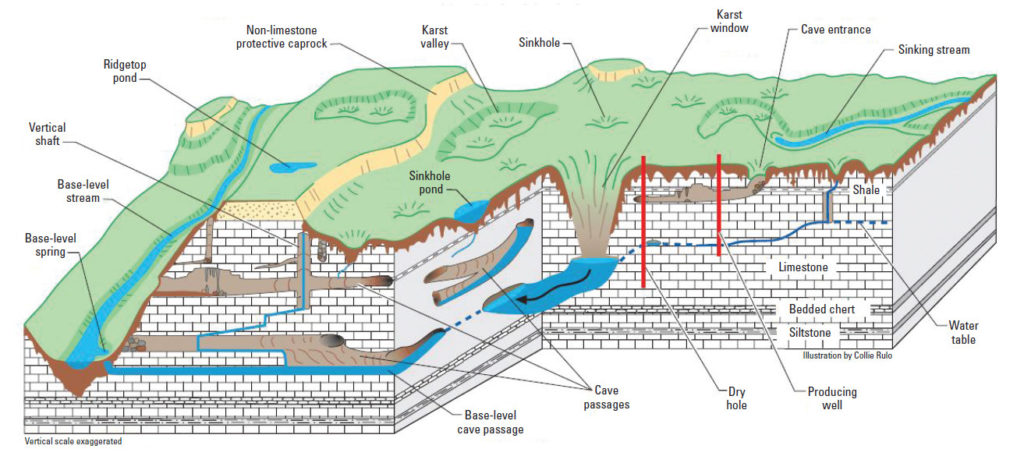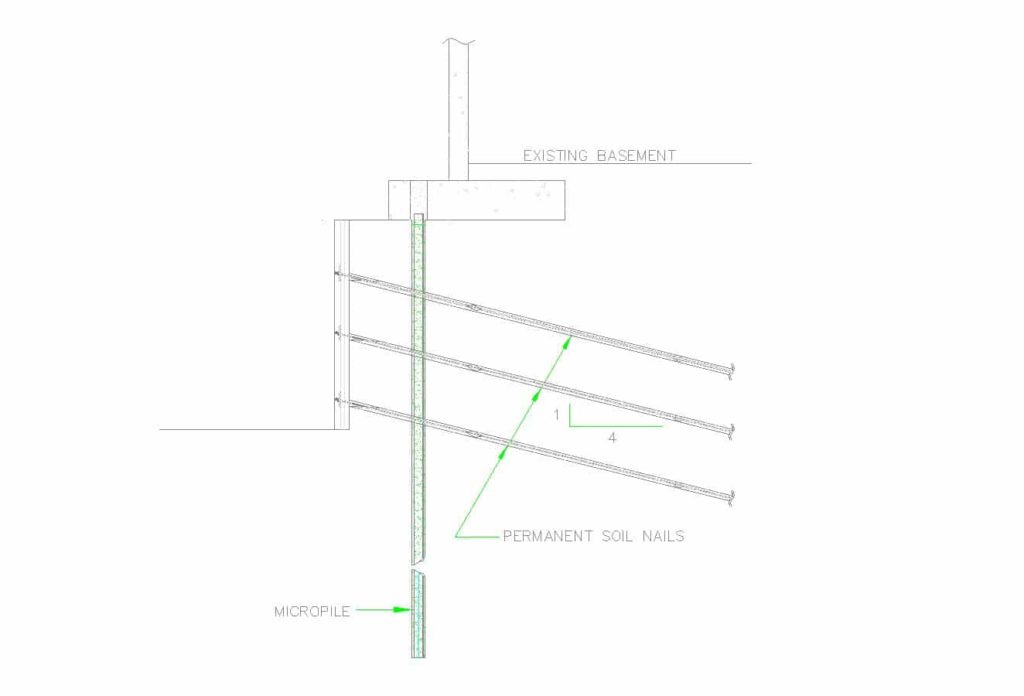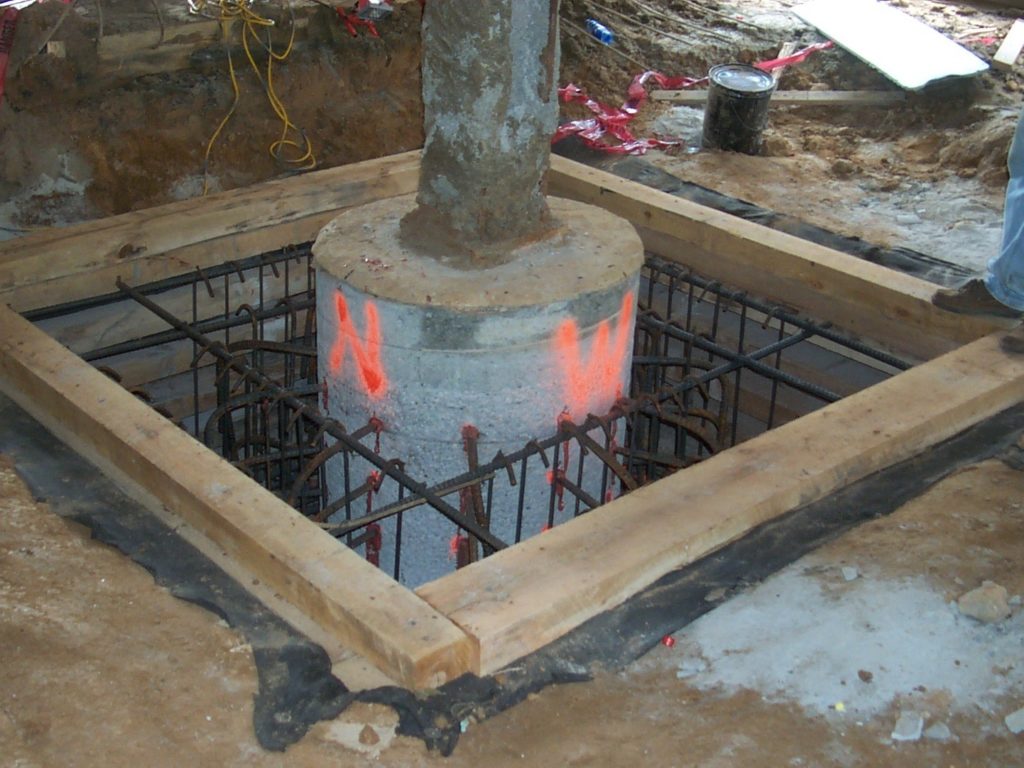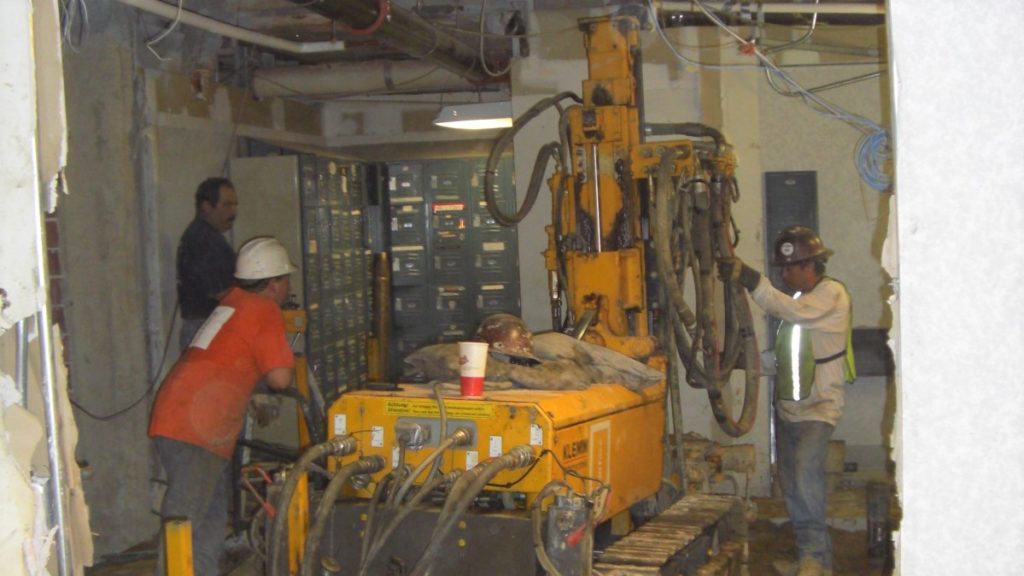What are the advantages of micropiles?
Overcoming Difficult Ground Conditions
The first advantage of micropiles has to do with the natural ground conditions at a project site. Micropiles can overcome difficult ground conditions such as debris fill, natural boulders, and karst. Other foundations systems such as auger cast piles and driven piles are not suitable in these soil conditions.
Debris Fill
Subsurface installed micropiles to support a hotel developed on an old debris fill. The fill consisted of soil, boulders, and concrete debris. Micropiles can be installed through such difficult fill conditions using overburden drilling systems. These drilling technologies undercut the casing to often allow for pile installation through the obstructions.
Karst
Karst is water soluble rock. In the work area of Subsurface Construction, karst is commonly encountered in the mountains of Virginia and eastern Tennessee. Due to voids, softer layers, and rock pinnacles, deep foundations such as auger cast piles or driven piles are often not feasible in karst geology. Because micropiles are installed by advancing casing and by using overburden drilling systems that can penetrate rock layers, micropiles can be advanced through the voids and soft layers and into competent rock.

Underpinning
Micropiles can be used for underpinning failing foundations, seismic retrofits, and to support new columns for vertical expansions. Micropiles can provide 400 kip vertical loads in as little as 9 feet of head room using 10″ diameter micropiles.
Underpinning
Micropiles can be used to underpin existing foundations by coring through the existing foundations and installing micropiles. The piles would then be bonded to the existing foundations to connect the piles to the existing building.
Micropiles can be used to support existing foundations to enable shoring near existing buildings. Underpinning is especially helpful in supporting a soil nail shoring system near a building.

Micropiles can also be used to underpin failing foundation systems.

Limited Access
Micropiles are often the only possible deep foundation system for areas of limited access. Micropiles can be installed in as little as 9′ of headroom. The limited access drilling equipment is run with electricity or exterior hydraulic power packs such that no fumes are introduced inside the building.

